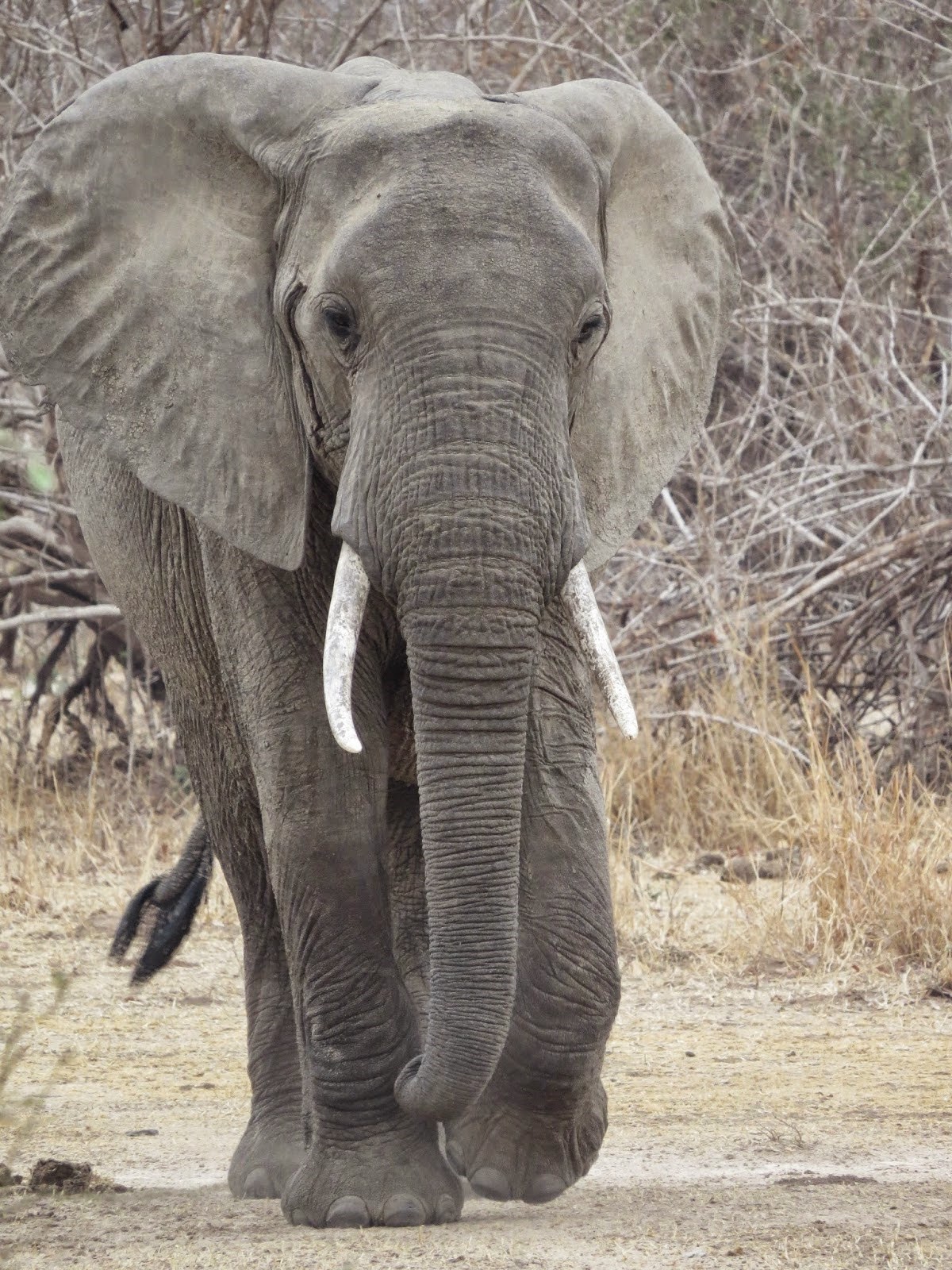I am in Zambia, Africa - on my first safari, in hopes of seeing big game in their own, natural environment.
An alternative to a game drive is to take a walking safari. Does a walking safari mean that you can run into lions?! In a way, it does.
So the guide takes us to an area where he feels we are unlikely to run into anything too big or too dangerous. It is not a long, arduous hike, but an interesting stroll through the African bush. The guide reads the ground like the pages of an open book.
“Look.” He points. “A hyena walked here. He was not in a rush because only the indentation of two middle claws shows.”
He also points out where baboons dined on the fibre of elephant dung. We see gorgeous round clay pots, broken open. They are the large balls that a dung beetle rolls through the mud.

Our guide shows us intricately woven weaverbird nests that always hang on the west side of a tree.
There’s even a bird called a tailorbird that stitches leaves together with real stitches.
 |
| A weaverbird nest. |
We follow trails made by elephants and hippos, see a large flock of bright green love birds that look like the leaves of a tree flying off.
One afternoon, we have lunch at Track & Trail River Camp. They’ve set a little table for us and when I look up I spot an elephant. Then three more. They come within metres. From the safety of the kitchen door, we watch as they stroll past, right next to the bar.
We visit Chipembele Wildlife Centre, an impressive visitors’ centre set up and run by a British couple. They were both police officers in England, obsessed by Africa. Seventeen years ago they moved here, built a house in the bush and now educate African children on the importance of wildlife. On the side, he catches poachers.
We found an elephant tusk on the ground.
He tells us about one poacher who has just been released from prison. Through some local contacts, we manage to make a date with the guy and spend an afternoon chatting with him. What motivates a poacher? Money.
The (ex)poacher has nine children and no job. The 70% unemployment rate in Zambia means no work, no income. So how does a father provide for his family? How does he put food on the table?
The easiest way is by poaching. Edwin told us he built his own guns and would spend the night in the bush, hunting impala, buffalo, kudo and more. He ate the meat but mostly sold it.
He got caught. At some point he got offered a job but screwed up and went back to poaching. He ended up in jail. Jail in Zambia is not for the faint of heart. “1,500 men in one cell,” he says. People right next to him died of suffocation. One meal a day of a kind of uncooked porridge. It was a wonder that he survived the year. But now he swears he will never poach again. Only time will tell. We hope he will find a job. His skills as a tracker are probably unparalleled. And he now seems to agree: wildlife needs to be protected. Wildlife brings tourists, and tourists bring money.
We also understand the problems caused by free roaming wildlife. Herds of elephants trample and eat the crops of corn. They break into grain storage units. Governments try to help villagers by building stronger storage units. They supply villagers with ‘chili bombs’ and help them to plant chili hedges to discourage elephants.
In Mfuwe, the village nearest the National Park, people have lots of trouble with elephants. “They come through our village at night and eat all of the mangos,” our driver tells us, “but people in the next village can sleep outside without fear of being trampled.”
I think about this as I fall asleep to the music of cicadas and the loud ‘snoring’ of hippos just outside our chalet along the river. That night we have the very first rainfall of the new rainy season - the first rain in seven or eight months. It will soon transform the region into a lush green forest with wide rivers and newborn animals. Animals, who will hopefully continue to live in their natural habitat without being brought to the brink of extinction.
Photos by Margriet Ruurs.



No comments:
Post a Comment